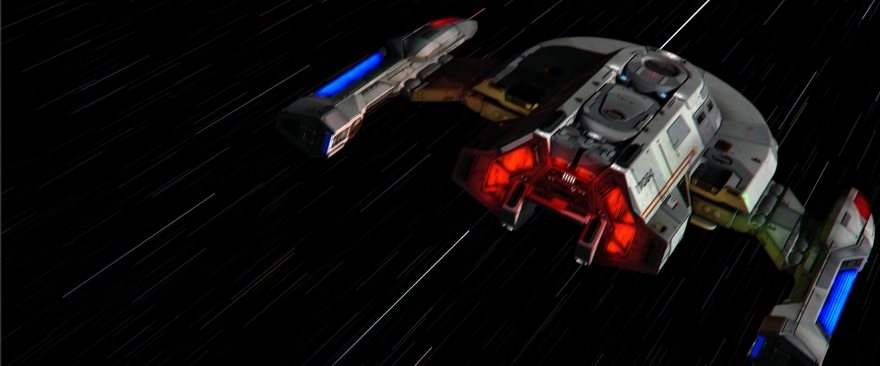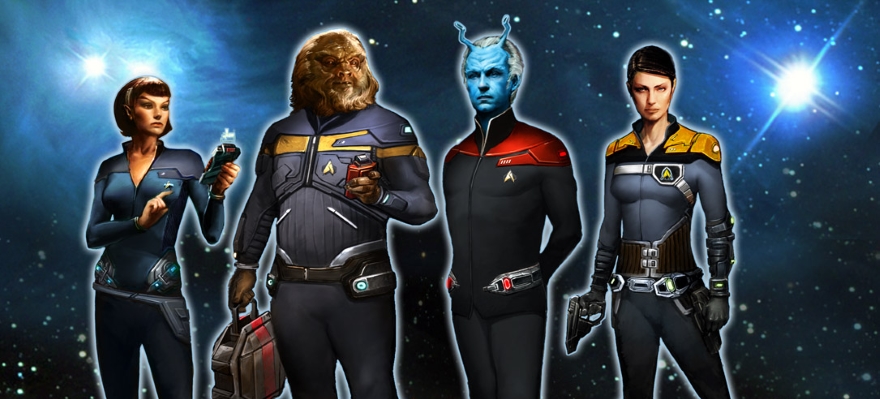
If you’re among the legions of Trekkies, then you are almost certainly aware of Cryptic Studios’ Star Trek Online. Since early 2010, players have boldly gone where no one has gone before in this MMO that blends spaceship battles, ground combat, and faithful tie-ins to the long-running franchise. Star Trek Online appears to be thriving following a free-to-play adaptation and two expansions, and some see it as the only official continuation of the TV series right now.
But what players encounter in Star Trek Online is not what it originally started out as. You may or may not know that STO began development under Perpetual Entertainment, which handled the game for several years until it went bankrupt and passed the license and art assets to Cryptic.
It’s another tantalizing historical “what if?” scenario to think about what this game would look like if Perpetual had taken it to launch and beyond. But what did this version of Star Trek Online look like? Let’s investigate.
These are the voyages
Here’s something you really might not have known: Star Trek Online was originally going to be a Sony Online Entertainment MMO. Verant Interactive obtained the rights to do it in 2000 but decided shortly therafter to pursue another galactic MMO instead (Star Wars Galaxies, although you might not have heard of that either) (just kidding, please don’t set fire to my comments section).
Flash-forward a few years to arrive in the MMO arms race of 2004. Perpetual Entertainment announced that it would be dropping a new contestant into the ring with Star Trek Online. Perpetual had acquired the license from Viacom to make an MMO based on all of Star Trek’s movies and TV series, which instantly transformed this property into a serious contender. Initial plans were to go into beta testing in 2006 for an eventual 2007 release.
To explore strange new worlds
While our current iteration of Star Trek Online takes place 30 years following the events of the film Star Trek Nemesis, Perpetual’s vision was only 20 years afterward. Romulans, Klingons, and the Federation would have been getting along well enough to shift efforts into exploring the beta quadrant instead of fighting wars.
Much of what we know of Perpetual’s Star Trek Online comes out of a few interviews, mock screenshots, and concept art released from 2004 through 2007. Players would have taken on the role of an officer who would be part of a crew of a starship. Many species were bandied about as potential player races, including Human, Vulcan, Andorian, Bajoran, Tellarite, Bolian, Klingon, Cardassian, Ferengi, and Trill. A wider variety of classes was debated (including medical) before being boiled down into the current trio of tactical, science, and engineering roles.
While starships hosting several player characters was mentioned, it also looked as though STO would allow a player to own his or her own ship. The devs were obviously torn on the desire to push group-based activities as being more in the spirit of the ensemble shows and to allow players a more solo-friendly path based on the MMO trends at the time.
The proposed solution was that players could own smaller ships like fighters and minor spaceships, but the big ones — like the Galaxy class — would instead be adventure hubs with explorable, detailed interiors. Both the character and ship would have had a standard MMO avatar gear screen, with slots for items such as “super boots.”
To seek out new life and new civilizations
Outer space was designed to look visually stimulating, on par with what players would encounter on the ground. If you’ve ever wondered (or complained) about why Star Trek Online’s space portions are rainbow-tastic, the genesis of this design decision started long before Cryptic.
It wasn’t all going to be non-stop combat with brilliant laser light shows; Perpetual seemed committed to emulating the spirit of the show with activities such as planetary surveys and diplomatic missons.
It’s hard to say how many of the ideas kicked around during the pre-alpha period would have made it into the live game, but one tantalizing feature was the suggestion of using the holodeck for player-created stories and PvP wargames.
Connecting the online game to the franchise was a high priority for both Perpetual and Crytic. Jean-Luc Picard was rumored to be an ambassador NPC, and Miral Paris (who is in the current game) would have been a significant character as well. One major feather in Star Trek Online’s cap is that it secured the help of Michael Okuda, well-known for being the technical design wizard behind the look of The Next Generation and its spin-offs.
To boldly go
Creating an MMO to emulate the unique and specific model of the Star Trek franchise was a massive headache to some of its devs. “At first glance, Star Trek seems like the perfect setting for an MMO,” said former systems designer Eric Heimburg, “but appearances can be deceiving. It’s actually a huge landmine of problems.”
By 2006, the team had moved into production and was frequently showing Star Trek Online’s screenshots and demo to press and fans. Players got to see their first glimpse of starships like the Akira-class as well as interior layouts of the large ship hubs. However, development wasn’t progressing as quickly as originally promised, and the release date got pushed back to 2008, and then later to 2009.
Even with progress being made, it wasn’t enough to prop up the company from impending disintigration. Perpetual was hit by layoffs in December 2006 and stopped working on its other title, Gods & Heroes, in an attempt to finish Star Trek Online before the studio ran out of funds. To make matters worse, Perpetual was slammed with a nasty, high-profile lawsuit by a public relations firm for “breach of contract, fraudulent transfer, and fraud.” Apparently, Perpetual had transferred its STO assets to a side company that it whipped up, named P2 Entertainment, in a doomed attempt to put the game outside of current legal scuffles and to keep money from those it owed. The suit was later settled, but it couldn’t have come at a worse time.
In short, Perpetual crashed by the end of 2007 and was forced to lay off its team and sell off the license and art assets to Cryptic in January 2008. While it was a solid IP for Cryptic, the acquisition meant that the studio was legally obligated to create an MMO within two years or face losing the license. This explains STO’s “rushed” feel and its early 2010 release.
The Star Trek Online that we ended up with wasn’t 100% different than Perpetual’s version, but part of me does wonder what it would have been like to play a Star Trek MMO that had less combat and more of a social world.
 Believe it or not, MMOs did exist prior to World of Warcraft! Every two weeks, The Game Archaeologist looks back at classic online games and their history to learn a thing or two about where the industry came from… and where it might be heading.
Believe it or not, MMOs did exist prior to World of Warcraft! Every two weeks, The Game Archaeologist looks back at classic online games and their history to learn a thing or two about where the industry came from… and where it might be heading.

















